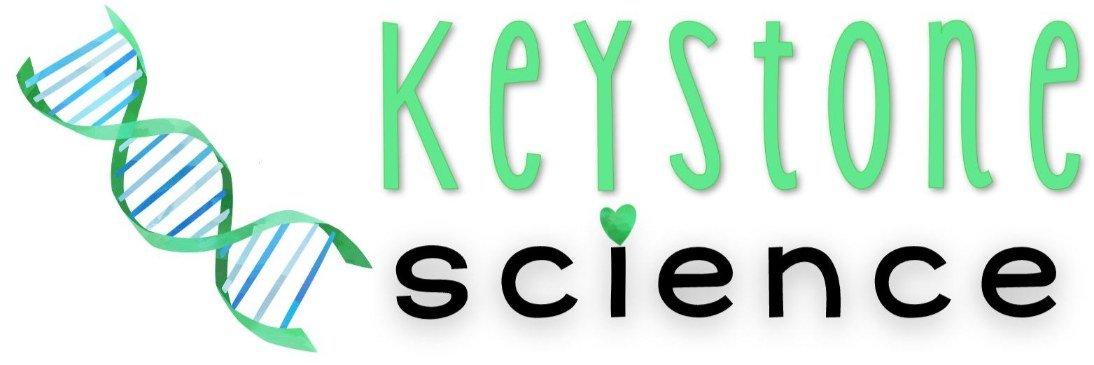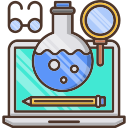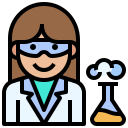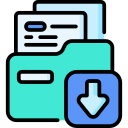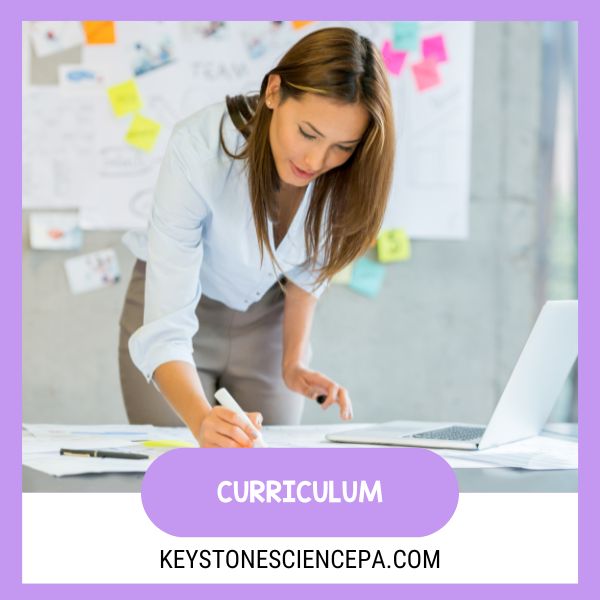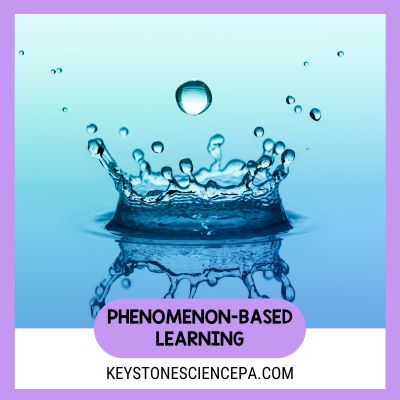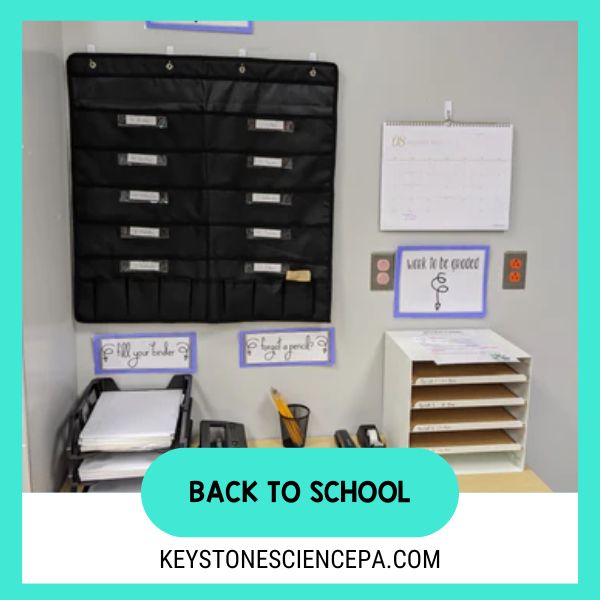Welcome back! I’m so excited to jump into the third part of my NGSS series. Today, we’re talking about curriculum planning—specifically, how to bring 3D learning into your existing curriculum. If you’ve been following along, you already know why 3D learning is such a big deal in NGSS. Now, let’s dig in and figure out how to align what you’re already doing with the NGSS approach. Let’s get to it!
How to Evaluate and Align Your Existing Curriculum

- Take a look at the SEPs (Science & Engineering Practices) in your current labs or activities.
- Spot the CCCs (Cross-Cutting Concepts) already present in those labs or activities.
- Match your labs or activities to the DCIs (Disciplinary Core Ideas).
- Identify any gaps in SEPs, CCCs, or DCIs to figure out what’s missing in your curriculum.
- Update any activities that aren’t fully 3D yet!
Each step won’t just explain what it is—it’ll show you how to use your current curriculum to align with NGSS and get started. If you’re looking for a quick, no-fluff refresher on the basics of curriculum planning for the NGSS, check out Everything You Need to Know About the NGSS!
Curriculum Planning Step 1: Identify the SEP’s of existing labs or activities
What you need: 1 to 3 existing lessons
Time to complete: ~5 to 10 minutes per lesson

Don’t stress about aligning all your lessons or activities at once when curriculum planning—it’s a lot to tackle! Instead, start small. Pick a few of your favorite go-to activities or labs, the ones you know like the back of your hand.
As you go through these activities, focus on the SEPs (Science and Engineering Practices) involved. Ask yourself:
- Are my students analyzing data at any point?
- Can I add an opportunity for them to construct models to answer a question?
- Is there a way for students to create opposing viewpoints to spark discussions?
These questions are the foundation for bringing in both science and engineering practices. Look for those moments where students can write questions based on their observations or design model-based solutions. This helps align your lesson with the first dimension of NGSS!
By the end, you’ll have an activity where inquiry drives the science and model design brings in the engineering. It’s a win-win!
Curriculum Planning Step 2: Identify CCCs (Cross-Cutting Concepts) in existing labs or activities
What you need: Same 2 to 3 existing lessons, CCC reading
Time to complete: ~10 minutes per lesson

In step 2, we’ll take a closer look at where cross-cutting concepts show up in your activity. To figure this out, ask yourself: Where can students ask questions? How can they use what they already know to make a claim? When are they making observations to spot patterns or figure out cause and effect? Are there connections to different areas of science?
This step is all about letting students take the lead on their curiosity. Instead of you pointing out the observations or patterns, they’ll start to discover these on their own. By weaving in cross-cutting concepts, students will see that even when they’re introduced to something new—like a phenomenon—they can still explore it, even if they don’t know much about it yet. Exploration is key! Asking questions, observing, and making connections can give them the tools they need to dig deeper into the lesson.
This step is all about letting students take the lead on their curiosity. Instead of you pointing out the observations or patterns, they’ll start to discover these on their own. By weaving in cross-cutting concepts, students will see that even when they’re introduced to something new—like a phenomenon—they can still explore it, even if they don’t know much about it yet. Exploration is key! Asking questions, observing, and making connections can give them the tools they need to dig deeper into the lesson.
Curriculum Planning Step 3: Map DCIs
What you need: 2 to 3 existing lessons, DCI reading
Time to complete: ~10 minutes per lesson

The NGSS puts a big focus on understanding the bigger picture instead of just memorizing steps or facts. And honestly, that’s the beauty of science and technology—it’s always evolving! By focusing on core concepts, students get a solid foundation they can build on and start making their own connections across different areas.
As students move through grade levels, these DCIs (Disciplinary Core Ideas) grow in complexity, helping them deepen their understanding of science. Sounds great, right? But you might be wondering—how do you actually apply DCIs to what you’re already teaching?
Here’s where to start:
- Make sure you’re familiar with the DCIs for your science discipline.
- Ask yourself:
- Where in the lesson are students able to build on these DCIs?
- Are there any standards missing or not fully covered?
If you find gaps when curriculum planning, take a moment to review the NGSS standards and figure out where they fit best in your lesson plan. It’s all about making those connections so students can really engage and grow!
Curriculum Planning Step 4: Notice gaps as areas of need in curriculum
What you need: 2 to 3 existing lessons
Time to complete: ~5 minutes per lesson
Time for one last check! Take a look and see if there are any gaps in your activities or if you missed any SEPs, CCCs, or DCIs. If something’s missing, don’t worry—you can get creative and tweak your existing activities to fit, now that you know how to align them. Or, head over to Keystone Science and browse over 100 ready-to-use, student-led activities to fill in those gaps!
Curriculum Planning Step 5: Enhance the lesson with 3D learning
What you need: 2 to 3 existing lessons
Time to complete: ~10 minutes per lesson
For the final touch, let’s make sure your activity not only follows NGSS best practices but also leaves room for some good old inquiry-based learning! Don’t stress—it’s all about your teaching approach, not the curriculum itself. Get students engaged by letting them DO science with hands-on exploration.
Effective & easy inquiry-based learning tips:
- Revamp Your Questions: Start by reworking your questions to spark curiosity and exploration. Try using CER (claim-evidence-reasoning) style questions to get students thinking critically. Open-ended questions are the key—they encourage students to dig deeper. CER is such a game-changer, and I’ll dive into it more in a future post!
- Let Students Take the Lead: Move away from scripted instructions and let students take charge of their learning. Give them the space to make decisions, form hypotheses, and discover things on their own. You’re there to guide them with cues if they need some help, but this is their chance to write their own lab procedures!
Incorporating Hands-On Experiments and Investigations:
- Revise Experiment Instructions: Instead of giving step-by-step instructions for experiments, try using guiding questions and let students design their own experiments. Start the year with traditional labs to teach them the format, then gradually remove structured instructions so they can take the reins. Trust me, it’s so rewarding to see the creativity they bring to their own experimental designs.
- Encourage Data Interpretation: Once students collect their data, have them analyze it, draw conclusions, and back up their claims using evidence. CER works perfectly here! Students can make their claims (what they’ve concluded), support them with evidence (the data they’ve collected), and connect the dots with reasoning (why the evidence supports their claims).
Promoting Student-Led Research Projects:
- Topic Choice: Let students pick research topics that match NGSS standards—it’s a great way to give them more ownership over their learning!
- Guided Inquiry: Use guiding questions to help steer their research and exploration along the way.
- Evidence-Based Arguments: Challenge students to present their findings through CER structured arguments, mirroring real-world scientific practices.
One of my favorite activities for student-led research is diving into bioethics topics—it’s always a hit! Students work with a partner to pick a side on a bioethical issue, research both sides, and present their findings. It’s such a fun way to channel their debate skills and keep them engaged 😜.
Next Steps
As we wrap up our dive into adapting your curriculum for 3D and NGSS alignment, keep in mind—this isn’t just about meeting standards. It’s about rethinking the way we teach. By weaving in Science and Engineering Practices, Crosscutting Concepts, and Disciplinary Core Ideas, you’re creating lessons that inspire curiosity, critical thinking, and scientific literacy.
Before you head out, take a moment to check out our previous blog posts on NGSS and 3D learning. And don’t miss the inquiry-based learning series while you’re at it! Want more teaching tips, handy resources, and fun extras? Join my email list or follow me on Instagram—I’d love to connect!
Oh, and stay tuned for our next post: “Incorporating Crosscutting Concepts in Daily Lessons.” We’ll dive into how to seamlessly bring these key ideas into your daily routines to connect subjects and deepen student understanding. Let’s keep moving forward together and make science education better than ever!
